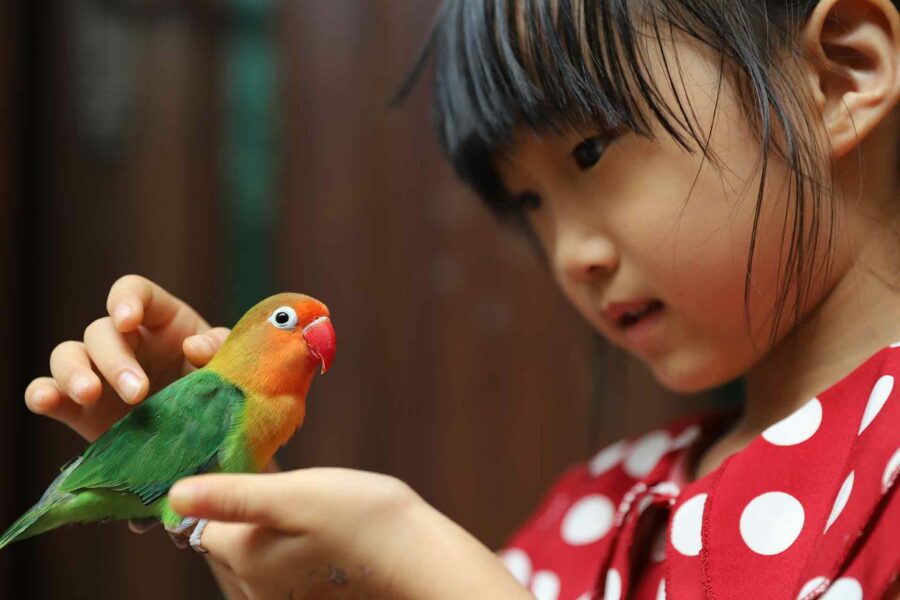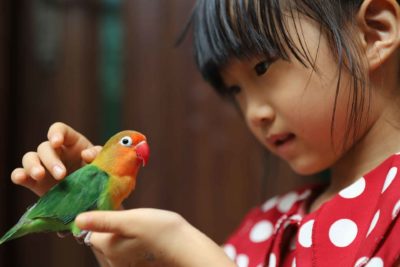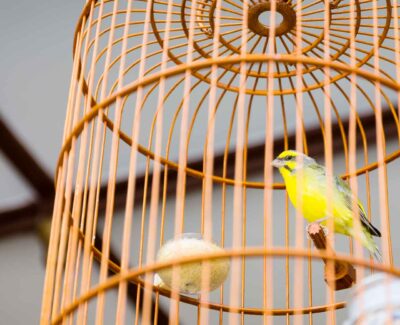
How to Pet a Bird: Handling Techniques to Ensure Your Bird’s Comfort
With their vibrant plumage, high intelligence, and intriguing behaviors, birds make wonderful pets. However, compared to dogs and cats, birds require a more careful approach when it comes to handling and petting. As a bird owner, understanding proper techniques for interacting with your feathered friend is crucial for building trust and ensuring their comfort. Read on for some essential tips on how to pet and handle your bird.
Understanding Your Pet Bird’s Body Language
Before attempting to pet your bird, it’s crucial to pay attention to its body language. Birds communicate through their posture, vocalizations, feather positions, and other physical signs. For example, a relaxed bird may have slightly ruffled feathers and appear calm, while a bird that is frightened or agitated might pin its eyes (rapidly dilating and constricting the pupils), flare its tail feathers, or even attempt to bite. However, it’s also important to keep in mind that each bird is unique with its own ways of communicating, so paying attention to context and the totality of body language cues that your bird is exhibiting is key. As you become more familiar with your bird’s body language, try to only approach for petting and handling when it appears calm and receptive to interaction.
Gaining Your Bird’s Trust
Building trust is the cornerstone of any pet-owner relationship, and it’s particularly important to establish a foundation of trust with your bird before you begin petting and handling it. Some birds may be more open and easier to bond with, while others may require more time and patience. A few steps that may help you gain your bird’s trust include:
- Spending time near your bird’s cage every day, talking softly or reading aloud.
- Avoiding any loud noises or sudden movements around your bird that could frighten them.
- Offering your bird’s favorite treats from your hand to encourage them to approach you.
Approaching Your Bird
When your bird seems comfortable with your presence, you can start to introduce physical contact. Approach your bird slowly and offer your hand or arm as a perch, keeping your movements smooth and predictable. It’s best to do this outside of the cage; if your bird doesn’t fully trust you yet, they may feel that you are violating their personal space if you stick your hand into their cage.
Your bird might not immediately be comfortable with stepping onto your hand or arm, but this process should help them become more accustomed to your physical presence in their space. If they do step up, praise them gently and offer a treat. Repeat this process several times—being careful to not rush anything—until your bird becomes comfortable with physical contact.
Petting Your Bird
Due to birds’ anatomy, it’s generally best to limit petting to their head, cheeks, beak, and feet areas. Stroking or petting your bird’s belly, back, or under the wings could potentially trigger the production of hormones—which can lead to unwanted behaviors, such as your bird perceiving you as a mate and becoming jealous or possessive of you.
When petting your bird, start by using a single finger to gently stroke its head, moving in the direction of the feather growth. Observe your bird’s reaction closely—if it seems relaxed and closes its eyes or leans into your touch, it’s a good sign that your bird is enjoying the interaction. However, if it moves away or seems agitated, stop immediately and give it some space. Paying attention to your bird’s body language is key, as overhandling may lead to stress, behavioral issues, and an erosion of the trust you’ve been working to build.
When done carefully and respectfully, petting your bird can be a wonderful way to strengthen your shared bond. By understanding your bird’s individual body language, taking the time to establish trust, and learning proper handling techniques, you can help ensure that physical interactions with your bird will be enjoyable for both of you.
Searching for the right pet bird to suit your preferences and lifestyle? Take our bird matchmaker quiz today!





